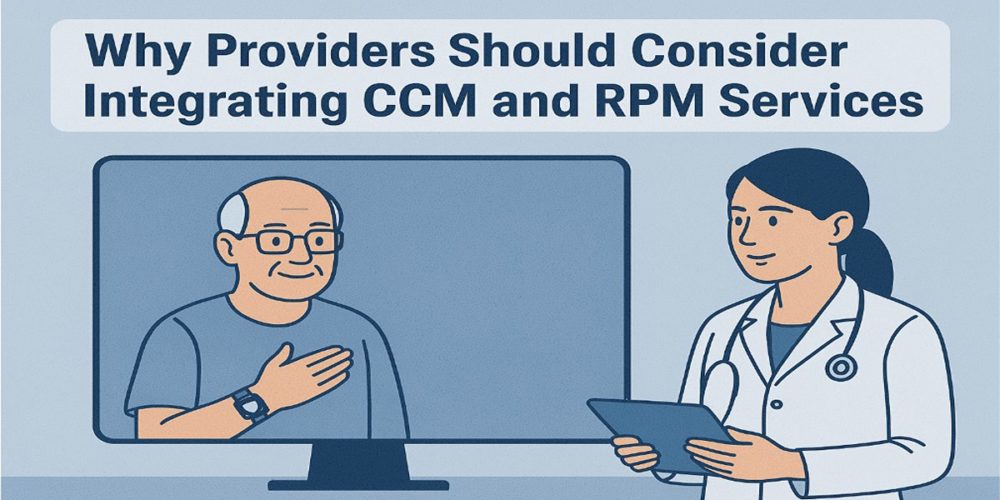The healthcare workforce is facing a crisis. A new survey by Forbes and The Harris Poll reveals that nearly half of U.S. healthcare workers plan to quit their jobs by 2025, driven by burnout, stress, and low pay. This could have devastating consequences for the quality and accessibility of care, especially amid the COVID-19 pandemic and the growing demand for healthcare services.
But there is a way to turn this crisis into an opportunity. Remote patient monitoring (RPM) is a technology that allows patients to track their health data at home or anywhere else, and share it with their providers in real time. RPM is part of the broader telehealth trend, which uses digital tools to deliver healthcare remotely.
RPM can benefit patients, providers, payors, and healthcare organizations in multiple ways. It can improve patient outcomes, reduce healthcare costs, increase provider efficiency, and enhance patient satisfaction. It can also help address the healthcare workforce shortage and retention challenges, by reducing the workload and burnout of healthcare workers, increasing their pay and incentives, and improving their retention and recruitment.
In this article, we will explore some of the benefits of RPM for each stakeholder group, and how it can help mitigate the impact of the looming healthcare workforce crisis.
For Patients
RPM can empower patients to take charge of their health and wellness, by providing them with easy-to-use devices and apps that monitor their health data, such as blood pressure, blood glucose, heart rate, oxygen saturation, weight, and more. For example, a patient with diabetes can use a glucose meter and an app to track their blood sugar levels and receive personalized feedback and alerts from their provider.
RPM can help patients with various conditions, such as chronic diseases, COVID-19 infection, post-surgical recovery, maternal and child health, cancer, and more. For example, a patient recovering from a heart surgery can use a wearable device and an app to monitor their heart rate, blood pressure, and activity level, and share it with their provider and care team. This can help them avoid complications and hospital readmissions.

For Providers
RPM can help providers improve their clinical performance and productivity, by providing them with timely and accurate data on their patients’ health status and needs. For example, a provider can use a dashboard to view the health data of multiple patients at once, identify those who need immediate attention or intervention, and communicate with them via secure messaging or video calls.
RPM can help providers across various settings and specialties, such as primary care, cardiology, endocrinology, pulmonology, oncology, obstetrics and gynecology, pediatrics, and more. For example, a pulmonologist can use RPM to monitor the oxygen saturation and respiratory rate of patients with COVID-19 or chronic obstructive pulmonary disease (COPD), and adjust their treatment plan accordingly.
For Payers and Healthcare Organizations
RPM can help payers and healthcare organizations reduce the cost of care delivery and improve the value-based outcomes. For example, a payer can use RPM to incentivize providers to deliver high-quality care at lower costs, by offering them performance-based payments or shared savings based on the metrics such as patient satisfaction, adherence, outcomes, and utilization.
It enables ED diversion and earlier acute discharge, resulting in shorter lengths of stay and lower cost of care. For example, a healthcare organization can use RPM to reduce the unnecessary emergency department (ED) visits or hospital admissions of patients with chronic conditions or mild symptoms, by providing them with remote monitoring and support at home or in other settings.
RPM also enables movement of appropriate levels of acute care and chronic care monitoring into the home, reducing the high costs of inpatient services. For example, a healthcare organization can use RPM to provide home-based hospital-level care for patients with acute conditions such as pneumonia or heart failure, by equipping them with advanced devices and sensors that monitor their vital signs and alert the providers in case of any deterioration.

How RPM Can Help Mitigate the Impact of the Looming Healthcare Workforce Crisis
As the survey by Forbes and The Harris Poll suggests, many healthcare workers are planning to leave their positions by 2025 due to burnout, stress, and low pay. This could create a significant gap in the healthcare workforce supply and demand, affecting the quality and accessibility of care.
RPM can help mitigate this impact by:
- Reducing the workload and burnout of healthcare workers, by automating data collection and analysis, streamlining workflows, and enabling virtual care delivery. According to a study by the American Medical Association, RPM reduced the time spent on documentation and administrative tasks by 38% among primary care providers, compared to usual care.
- Increasing the pay and incentives of healthcare workers, by boosting net patient revenue, creating new reimbursement opportunities, and enhancing value-based outcomes. According to a study by the American Hospital Association, RPM generated an average annual net revenue of $1.4 million per hospital, compared to usual care.
- Improving the retention and recruitment of healthcare workers, by enhancing their job satisfaction, engagement, recognition, and professional development. According to a study by the Health Resources and Services Administration, RPM increased job satisfaction by 23% among rural primary care providers, compared to usual care.
By leveraging RPM technologies, healthcare organizations can create a more sustainable and resilient workforce that can deliver high-quality and patient-centered care. RPM can also help healthcare workers cope with the challenges and demands of the COVID-19 pandemic and beyond, by providing them with tools and support to improve their clinical outcomes and professional well-being.
Conclusion
Remote patient monitoring is a promising solution to address the looming healthcare workforce crisis, as well as to improve the efficiency, quality, and satisfaction of healthcare delivery for patients, providers, payors, and healthcare organizations. RPM can help reduce the workload and burnout of healthcare workers, increase their pay and incentives, and improve their retention and recruitment. RPM can also help enhance the patient experience and outcomes, lower the cost of care, and expand access to care.
If you are interested in learning more about how RPM can benefit your organization or practice, contact us today. We are a leading provider of remote patient monitoring solutions that are tailored to your specific needs and goals. We can help you design, implement, and manage your RPM program, and provide you with ongoing support and training.



